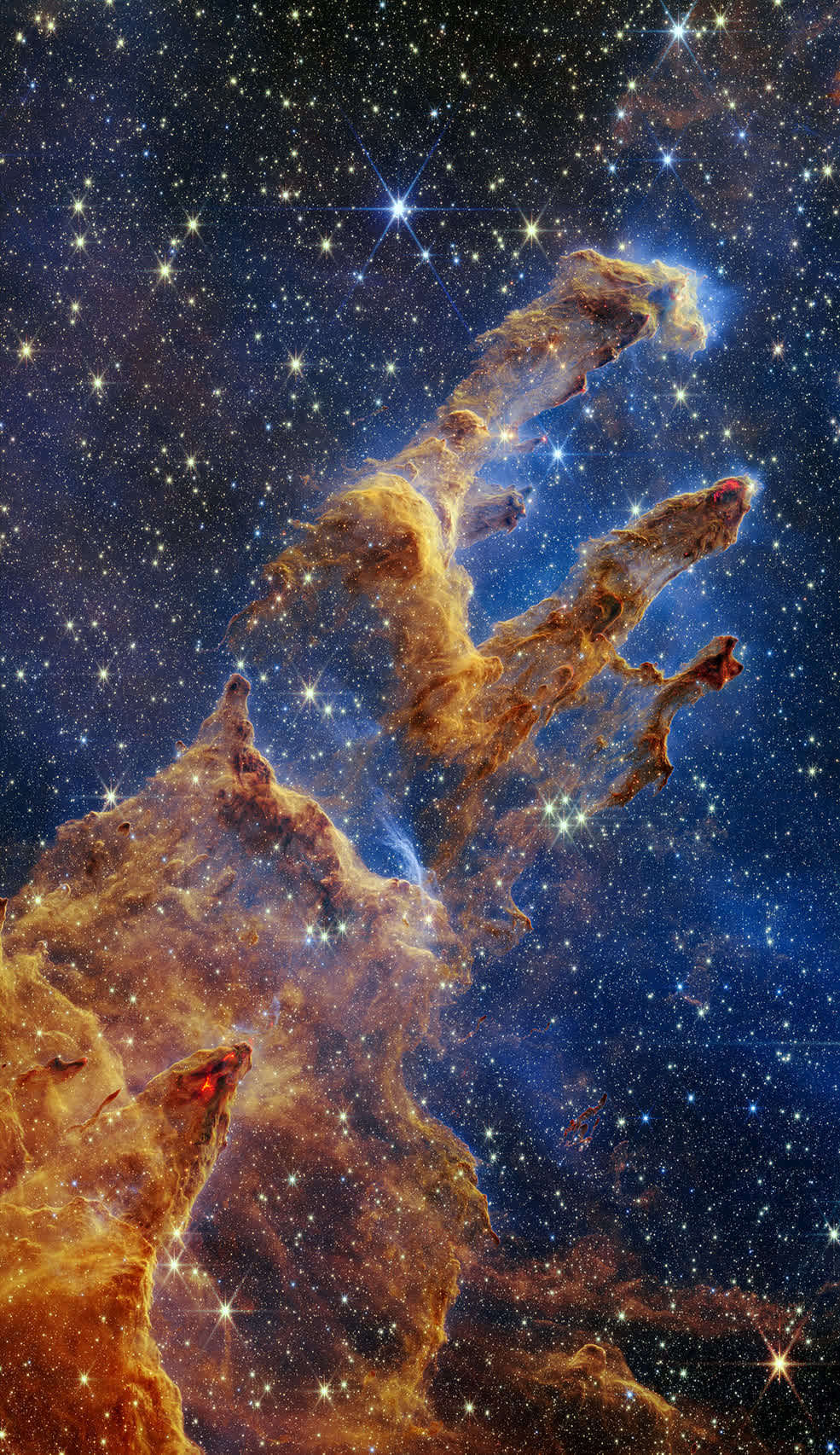What just happened? The James Webb Space Telescope continues to deliver in spades. This week, NASA released a stunning image of a celestial formation first photographed by Hubble in 1995 affectionately known as the Pillars of Creation.
The iconic target is a tight crop of the Eagle Nebula located around 6,500 light-years from Earth. The arches and spires are clouds of gas and dust that serve as incubators for new stars. Webb’s high-powered Near-Infrared Camera (NIRCam) was able to image the formation with far more detail than previously seen.
Interestingly enough, NASA said there are no galaxies in Webb’s latest portrait. That’s because a mix of translucent gas and dust known as the interstellar medium in our own Milky Way is blocking our view of the deeper universe, allowing the stars to take center stage.
The wavy lines near the edges of some pillars are ejections from stars that are still forming. Occasionally, they shoot out jets that collide with nearby material and result in shockwaves that resemble the wavy patterns created by boats as they move through water. This is most evident in the second and third pillars from the top, where new stars are estimated to be only a few hundred thousand years old.
The bright red orbs – many of which exhibit Webb’s trademark diffraction spikes – are newly formed stars. When bundles of gas and dust reach sufficient mass, they begin to collapse under gravity, heat up and eventually form new stars.
Hubble imaged the Pillars of Creation in 1995 and again roughly two decades later. Many other observatories have also taken a look at the celestial body over the years. The new data from Webb will help researchers better understand how stars are formed and land on a much more precise count of newly formed stars.
A full-resolution, uncompressed version of Webb’s view of the Pillars of Creation measures 13,560 x 6,551 and weighs in at 147.27 MB. It is available to download directly from the Webb Telescope website.


